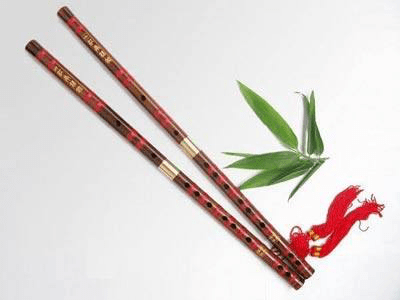Introduction to Bamboo Flute Tutorial
The flute is the oldest Han musical instrument discovered so far, so what are the introductory teachings for the flute? - Let's take a look!

Beginners teaching of flute
1. Introduction to the structure of the flute (the relationship between the sound hole and the sound)
The blow hole is where we blow air with our mouth, and the sound hole is where our fingers press the hole. By pressing different sound holes to produce different sounds, the level of sound can be determined by controlling the strength of blowing air to the blow holes. The film hole needs to be filmed by itself, and the quality and material of the film will also affect the sound of the flute.
2. Dizi fingering
Make the structure diagram of the flute upright, according to the sound hole from top to bottom, from the first hole to the sixth hole. The commonly used fingering method is that the left hand is on the left and the right hand is on the right, that is, the index finger, middle finger and ring finger of the left hand are respectively pressed on the sixth hole, the fifth hole and the fourth hole. The index finger, middle finger and ring finger of the hand press the third hole, the second hole and the first hole respectively. The black circle in the picture above represents pressing the sound hole with your finger to block the air flow and prevent it from flowing out. As can be seen in the picture, in the picture on the left, hold down all the six sound holes for the sound of the bass 5. In the first picture, let go of the first hole, and hold the other holes for the sound of the bass 6. The following analogies are analogous. The flute represents the sound of the bass 5. Fingering, the numbers below represent the corresponding sound.
3. Breath control
When they first got the flute, many friends may not be able to play the flute. The biggest reason may be that they don't know how to use the breath and don't know how strong they should be. At the beginning, it is recommended to blow slowly, and let the breath slowly blow into the blow hole from the mouth. If you are not used to holding the flute, you can also take the pen cap and blow against the pen cap. Pay attention to the angle of blowing and the strength of the breath, that kind of feeling It's the same as playing the flute. When you can play the flute, you can follow the fingering chart above and press and hold the blow hole to make different sounds. It is not enough to just play the flute. It often takes a long time to play a complete piece of music. During the process of playing, we must learn to control the size of the breath exhaled, and also control the stability of the breath and the airflow. The size will affect the pitch and timbre, and if it is unstable, the sound will become extremely discordant. We can solve this problem by practicing long tones.
4. Playing skills - single spit
When playing, each note often needs to maintain its granularity. In this case, a single vomit is used, and the symbol of a single vomit is a "T". A single spit is the feeling of pressing your tongue against your lips and reciting the word "spit" with your mouth. When playing a piece of music, if you don't spit it out, you will hear a continuous tone, which is vague, and each tone of the single spit will become very clear. Once the single vomit and legato are combined, the expressive power of a piece of music will come out.
5. Playing skills - double spit
Double vomit is relative to single vomit. When maintaining the granularity of the sound, if the rhythm is too fast, or if the sixteenth note, the thirty-second note cannot be handled by a single spit, and the flexibility of the tongue is not enough, then double spit can come in handy. The signs of double vomit are "TK", "T" and the single vomit method introduced above. Use "spit", "K" to read "Ku" with the mouth, and the tongue is retracted when reciting "Ku" to deal with the resting state. , you can press your lips forward again at any time. Double vomit is generally common in the first eight and sixteen, the first sixteen and the eighth, or the sixteen, which is a note with two tones and four tones.
 渝公网安备 50010702504639号
渝公网安备 50010702504639号